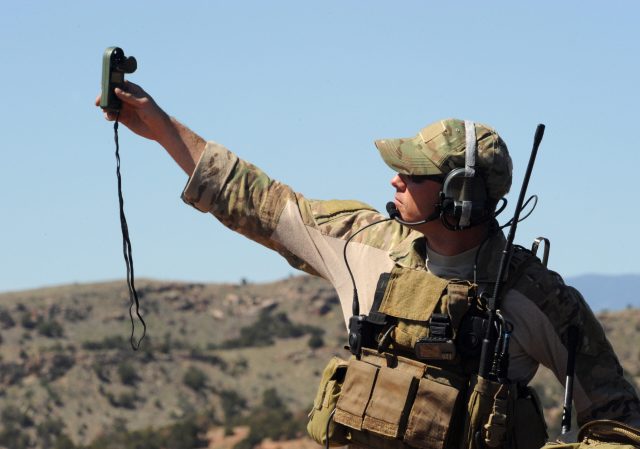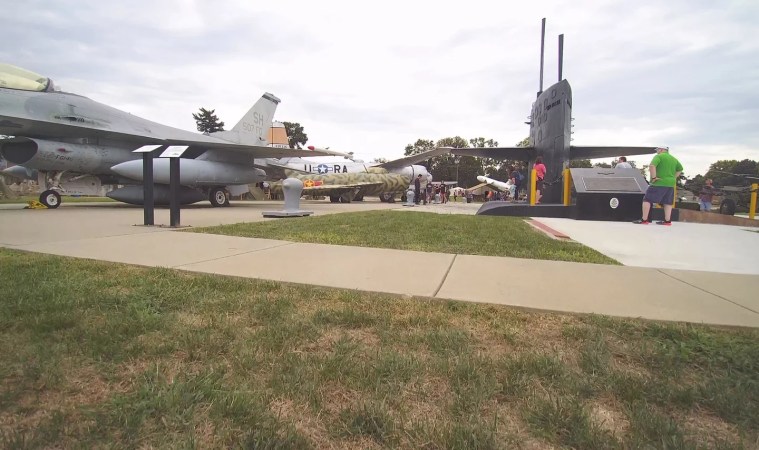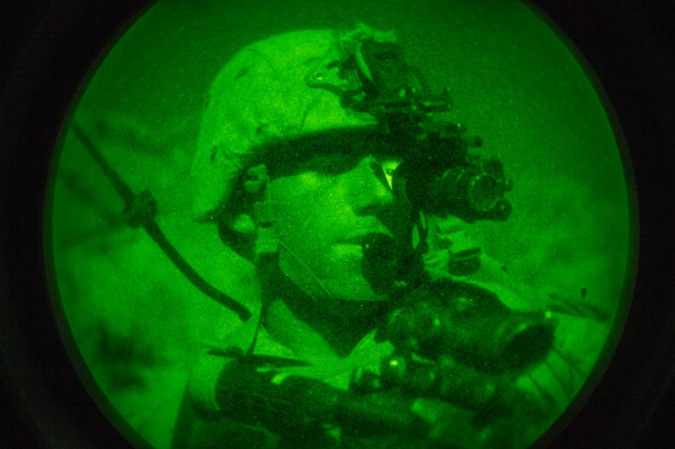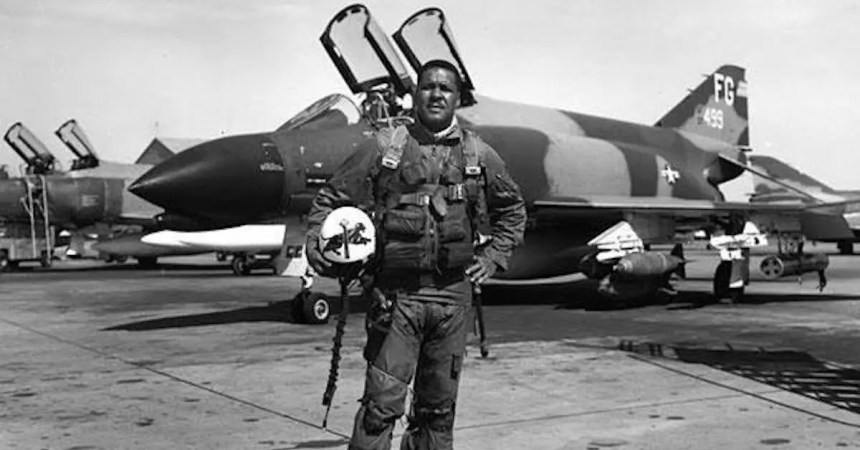The future is coming, and if you’re in the military that means a return to the wars of the past where troops fought in large armies and task forces for bits of land on far flung battlefields.
With an ever more aggressive China and Russia pushing against America and its allies around the world, Pentagon planners believe troops have to be ready to fight near-peer rivals the next time the balloon goes up.
Here are six things American troops need to be ready for if this generation’s Cold War turns into World War III:
1. Patrols will have to deal with enemy surveillance at all times

One of the worst things for the average Joe on the ground will be avoiding an enemy’s persistent surveillance. Near-peer rivals have a blanket of drones, satellites, and electromagnetic sensors that will spot Marines and soldiers and their radio transmissions.
Patrols will have to attempt to avoid detection when possible, but be ready to move quickly and often even when the enemy is looking. Because a single, low-flying drone can provide up-to-the-second targeting data to an enemy mortar team, automatic weapons teams and riflemen won’t be able to stay in one place for long.
2. Every firefight will become a multi-dimensional slugfest within minutes

In World War II, Korea, and Vietnam, U.S. troops had to deal with the fact that enemy spotters could quickly feed their locations to air and artillery assets, triggering an air battle overhead and an artillery duel on the ground.
In a future conflict, this will be even worse as both sides employ drones and automatic sensors that find enemy troops and relay targeting data to supporting planes, artillery units, and electromagnetic warfare specialists.
Any fight larger than a couple of squads duking it out will likely see an air battle develop overhead and an intense duel to jam the opponent’s communications in the electromagnetic spectrum.
3. Leaders must be ready to go completely analog

Speaking of which, all the high-tech bells and whistles will become nearly useless if the jamming on each side gets too intense. Soldiers and Marines are already practicing land nav with pencils, compasses, and paper maps while the sea services are digging up old sextants for celestial navigation.
Headquarter companies will now need to plant their antennas far from the operations center so that missiles which hunt electromagnetic transmissions won’t home in on communication arrays and wipe out the command team.
Expect buried phone lines, mobile radios with whip antennas, and redundant systems to make a comeback.
4. Cooperation between branches will be more challenging — and essential

All this will make it harder for the different military services to talk to one another, but they have to be able to coordinate quickly since ubiquitous sensors and fast-moving weapons mean that forces in trouble need help in seconds to survive.
Marines fighting ashore at the next Battle of Guadalcanal can’t wait for Chesty Puller to get to the ships and personally direct naval artillery. Whether or not the radio operator can find an unjammed radio channel and get a coded message out will decide whether air and artillery support will arrive in time to matter.
5. Medics and physician assistants will have to treat patients for hours or days in the field on their own

With the dynamic fighting on the front, troops will likely be wounded and killed at staggering rates not seen since the Vietnam War. While China and Russia are more likely to observe the Geneva Conventions than insurgents in Iraq and Afghanistan were, the military can’t count on being able to quickly and safely evacuate the wounded.
To deal with the increased risk to injured personnel, the Army is spearheading a “telemedicine” effort that would allow medics in the field to send data and photos to surgeons in hospitals who would then walk the medic through necessary treatment options.
6. Mission loads will be heavier, and forces will have to be more self-sufficient

Medical evacuations won’t be the only missions that become more challenging. Aerial resupply will be a risky maneuver when top-tier missile systems are hunting American planes and helicopters. To adapt to this, ground pounders will need to carry extra gear with them through the jungles of the Pacific or across the plains of Eastern Europe.
Chemical treatments for water will help keep liquid weight from climbing too high, but troops will need extra food, batteries, and ammo in case the helicopters can’t get in. The Pentagon is looking into some high-tech gizmos like powered armor to help with this increased weight, but most of it will rest on the muscles and bones of the troops.


























